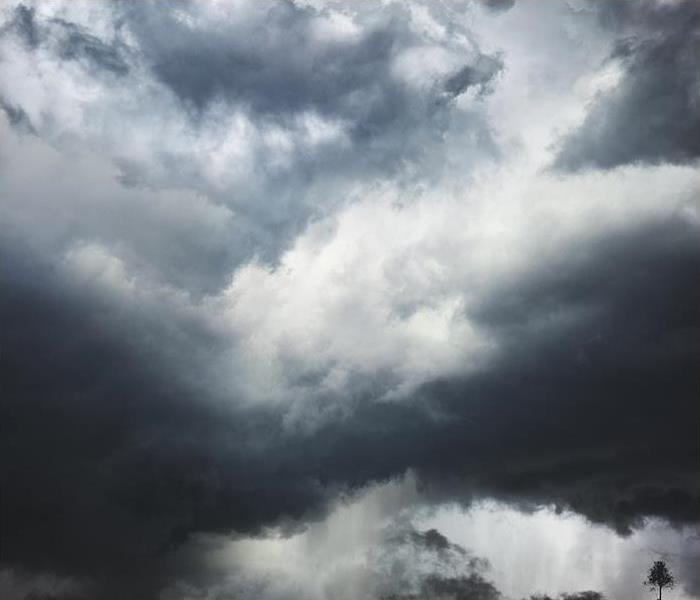The Four Common Types of Thunderstorm
9/2/2021 (Permalink)
Summer is a surprisingly common time for thunderstorms in the South. The breezy, warm summer air needs a gentle nudge from a mountain or hilly area to push it into the upper atmosphere and start all those electrons bouncing around.
Once a convection cycle begins, it’s only a matter of time before the lightning starts and you have to move indoors.
There are four typical kinds of storms we encounter in the U.S., and it’s good to know what could be out there. Let’s look deeper into the most common storms.
Single-Cell Storms
These are your basic summer afternoon storms. Sometimes referred to as “popcorn convection” storms, these storms pop up almost at random in the afternoon and evening heat, and dissipate within an hour.
They are not part of any organized weather front, and while they produce heavy rain and lightning, they are rarely severe.
Multi-Cell Storms
Thunderstorms often form in clusters, with multiple cells merging together in various states of formation. While single cells still operate within the cluster, they are replaced with new cells as they move, and they create a larger, more dangerous system than a single-cell storm.
These storms can produce new cells so quickly and further upstream that they appear to be growing backward, against the upper wind. They can also produce cells in an echo-type formation, which are capable of dropping hail, dangerous amounts of rain and flash floods.
Squall Line
Sometimes thunderstorms continually reform at the edge of a weather system, leaving hail and rain behind them as they travel. These groupings of storms arrange themselves in a linear pattern, forming long, thin bands of heavy storms.
They can be hundreds of miles long, but often pass quickly as they may have a width of only 10 to 20 miles. These kinds of storm systems don’t typically produce tornadoes, though they can—they’re more likely to produce straight-line wind damage.
Supercells
These are the ones weather experts have nightmares about. A particular kind of single-cell storm that can live for hours, supercell storms are most likely to produce hailstones larger than golf balls, and are almost always the source of tornadoes.
Supercells are formed when wind is coming from different directions at different atmospheric levels, causing rising, warm air to rotate. These storms boast can produce both updraft and downdraft winds over 100 mph. It is from these cells that wall clouds, which give birth to funnel clouds and tornadoes, form.
No matter the storm and no matter the damage, SERVPRO is here to make it right. When you have water, wind or hail damage, contact us for rapid, thorough assistance.




 24/7 Emergency Service
24/7 Emergency Service